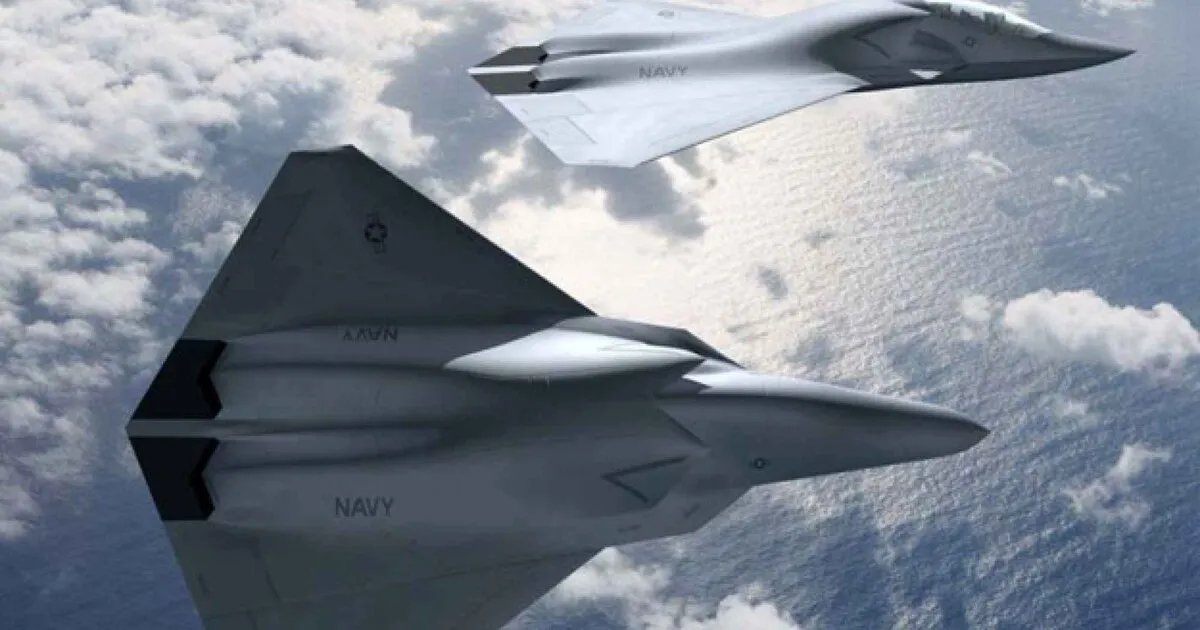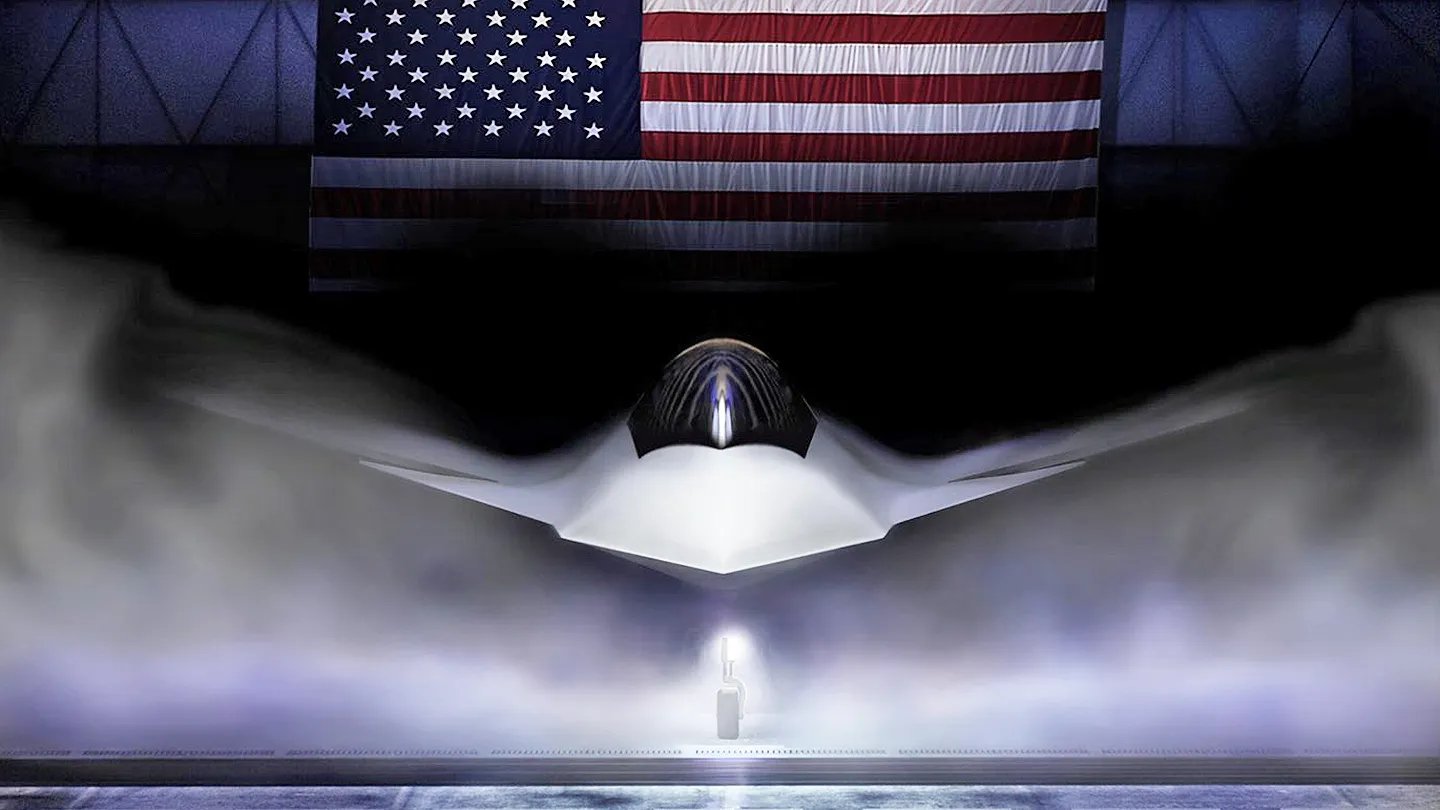Just days after the U.S. Air Force announced that Boeing will build its next crewed stealth combat jet, now designated the F-47, the Navy looks set to confirm the choice of its own carrier-based sixth-generation fighter. The Navy’s new combat jet is often referred to as the F/A-XX and is planned to enter service in the 2030s. So far, the program has been even more secretive than the Air Force equivalent, although, as we have explored in the past, the jet will be central not only to the Navy’s future tactical aviation plans, but also to the future of the service more generally.
According to a report today from Reuters, the Navy will announce the contract award for the F/A-XX engineering and manufacturing development (EMD) phase “this week,” based on information the agency has received from unnamed “people familiar with the decision.” Such an announcement would come a month after Adm. James W. Kilby took up his post as the new Chief of Naval Operations (CNO). The Reuters story in question is written by the agency’s Mike Stone, who last week disclosed the imminent announcement of the Air Force’s decision on its sixth-generation fighter.

The EMD contract should be worth “single-digit billions of dollars in the short term,” according to the report, with the F/A-XX program as a whole worth “potentially hundreds of billions over the decades it is expected to run.”
Originally, Boeing, Lockheed Martin, and Northrop Grumman were all in the running to develop the F/A-XX. However, Lockheed Martin was reportedly ejected from the competition earlier this month, since its proposal “did not satisfy the service’s criteria,” according to Breaking Defense, whose story cited an unnamed source with knowledge of the program. We have not been able to confirm this fact at this time, but if true, the company’s future fighter opportunities would be limited beyond the F-35, although that platform will be in service for many decades to come.
Today’s report states that, as well as detailed proposals, all three of the original candidates also submitted “prototypes for evaluation.” If that’s correct, it would be the first confirmation that demonstrator aircraft of any kind have been built and tested for F/A-XX.
In fact, it would be surprising if demonstrators hadn’t been built for F/A-XX.
By now, we know that at least two demonstrators were built ahead of Boeing’s selection for the F-47, and perhaps even three, based on unconfirmed earlier reports.

In the past, TWZ speculated that F/A-XX demonstrators likely did exist, with other evidence including the significant spending plans for the program between Fiscal Years 2024 and 2028 — more than $9 billion.
One very interesting aspect of the Reuters report is the suggestion that Lockheed Martin’s proposal was rejected for reasons that included “the need for a more advanced radar system and improved carrier landing capabilities.” Once again, these details have not been confirmed.
Like the Air Force, the Navy is working on its sixth-generation fighter as part of a program named Next Generation Air Dominance (NGAD). The Navy is involved in direct cooperation with the Air Force’s program and both initiatives put crewed fighters at the center of a broader ‘system of systems’ that will also include advanced Collaborative Combat Aircraft (CCA) drones. Details of the specific crossover between the two programs remain fairly scarce, however.

The Navy wants to start fielding the F/A-XX in the 2030s — a similar timeline to the F-47 — and it will use it, alongside complementary drones to replace its F/A-18E/F Super Hornet multirole fighters as well as its EA-18G Growler electronic attack jet. Eventually, the F/A-XX should be a central part of a new-look carrier air wing that could feature as much as two-thirds uncrewed aircraft.
As for how the F/A-XX might look, we have very little to go on at this stage, but more may be revealed in the course of this week.
In the past, the previous CNO, Adm. Lisa Franchetti, quoted in an article by Air & Space Forces Magazine, said that the F/A-XX will have “advanced sensors, advanced lethality, advanced range [and be] able to integrate with manned and unmanned capabilities together.”
In particular — and in parallel with the Air Force’s NGAD — the kinds of capabilities that the F/A-XX will offer will likely be closely tailored to the demands of a future conflict with China.
The ability to integrate with drones is one area where the F/A-XX will likely benefit from the Air Force’s NGAD effort. Here, the two services sharing some technology and even control capabilities for CCA drones would appear to make much sense.

As for flying missions at long ranges, this is something that is very much driven by concerns around future contingencies in the Indo-Pacific theater.
Here, U.S. and allied aircraft would face increasingly advanced and much farther-reaching air defenses, as well as the vast distances involved in such a theater in any context. While the Air Force has apparently spent some time weighing up the centrality of long-range capabilities for its NGAD fighter, it seems the Navy has remained committed to extended endurance. As TWZ has discussed in the past:
“Allowing for the carrier air wing to be able to reach relevant target sets and at a significant frequency while keeping the carrier itself at a safe distance from anti-ship and other anti-access capabilities is a glaring issue for the U.S. Navy. Dramatically increasing the unrefueled combat radius of at least some of its fighters, which would be paired with CCAs with similar endurance, would go a long way to solving this problem.”
Of the two contenders now vying for the F/A-XX EMD contract, Boeing has just emerged victorious for the Air Force’s NGAD fighter — now known as F-47. This is a major boon for the company, which has seen significant recent setbacks in both its commercial and defense businesses.
Winning the Air Force’s NGAD fighter competition might have been Boeing’s last chance to survive as a fighter-builder. The company announced back in 2023 that it was going to close down the F/A-18E/F Super Hornet line and indicated it would refocus in part on advanced combat jet efforts. The firm has made significant investments in its St. Louis, Missouri, facility to prepare it for sixth-generation fighter production, which could include the F-47 and F/A-XX.

TWZ asked Boeing about whether there exists any relationship between its F-47 design and the proposal submitted for the F/A-XX competition, but the company said it had no information to share.
If Boeing were to secure the F/A-XX deal as well, it could offer economies of scale and make it easier to share technologies between the aircraft. Potentially, Northrop Grumman could still have a role to play, as a key subcontractor in the F/A-XX aircraft itself, but also in some of the many supporting and ancillary systems.
Meanwhile, it was reported that Northrop Grumman may have dropped out of the Air Force’s NGAD fighter competition in part to focus on the F/A-XX. Northrop Grumman is well established when it comes to developing cutting-edge stealth platforms, such as the B-2 and B-21 stealth bombers. However, the company has not built a crewed combat jet for the Navy since the Cold War-era F-14 Tomcat, which was a Grumman design, emerging years before Northrop’s 1994 acquisition of that firm. Should Northrop Grumman lose the F/A-XX competition, its hopes of becoming a fighter manufacturer again are likely over for good.

It appears that we will find out the Navy’s decision very soon. Whatever the choice, it will be a highly significant event. We will then know exactly which manufacturers are responsible for developing sixth-generation fighters for the Air Force and the Navy. We may also get a better idea of the possible crossover between the two aircraft.
At the very least, some welcome light will be shed on what has, until now, been a program even more secretive than the Air Force’s equivalent.
Contact the author: thomas@thewarzone.com
